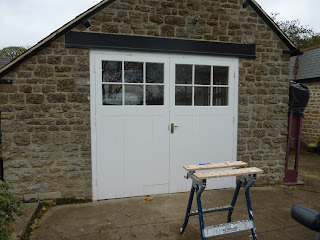People remember films from opening title sequences, this is how many people describe and recognize films.
Titles in silent films
Words and letters were the biggest part of this type of film, they had to provide essential information for the viewer because of such things as ease of production. This was usually provided by white letters on black backgrounds. In addition to hiring lettering artists, the biggest film studios began to employ typesetters in the production of title cards.
Titles with music
Movies got more popular and producer started to invest more money into sounds with the titles. For example the dog they liked to convey the tone of a movie through the dressage of its main title. For example black and red letters conveyed horror. Hollywood animation studios, including Warner Brothers and MGM, did give some license to their artists to indulge in title antics. Disney took it upon themselves to put the characters into the title sequence.
The birth of title sequences
In 1950 Saul Bass, Pablo Ferro, Maurice Binder and Richard Williams At that time, independent filmmakers made commercial headway by doing things differently, spreading utterly fresh ideas about the possibilities of title sequences. This is the era in which the discipline of film title sequence design was actually born. Experimentation on the fringes, where title sequences really thrive, have led to all kinds of innovation.
The Modern era of film titling
Every film title has been effected in some way by computers this is excellent for designers. Creating film titles means participating in the apprenticeship tradition continued The revolutionary title sequence for “Se7en” (1995) by Kyle Cooper was named by New York Times Magazine as “one of the most important design innovations of the 1990s”: The potential of digital graphics and typography has attracted some of the most creative minds to motion design. Pixar and Disney have reserved crucial parts in the branding of their films for the title sequences, using animated character to represent the film.
Conclusion
Over the years the titles for movies has changed due to the fact that fashion has changed, however the value of the title has stayed the same as it has always been used for the same reasons. The only difference that you can see clearly is that titles get more creative over the years.
Titles in silent films
Words and letters were the biggest part of this type of film, they had to provide essential information for the viewer because of such things as ease of production. This was usually provided by white letters on black backgrounds. In addition to hiring lettering artists, the biggest film studios began to employ typesetters in the production of title cards.
Titles with music
Movies got more popular and producer started to invest more money into sounds with the titles. For example the dog they liked to convey the tone of a movie through the dressage of its main title. For example black and red letters conveyed horror. Hollywood animation studios, including Warner Brothers and MGM, did give some license to their artists to indulge in title antics. Disney took it upon themselves to put the characters into the title sequence.
The birth of title sequences
In 1950 Saul Bass, Pablo Ferro, Maurice Binder and Richard Williams At that time, independent filmmakers made commercial headway by doing things differently, spreading utterly fresh ideas about the possibilities of title sequences. This is the era in which the discipline of film title sequence design was actually born. Experimentation on the fringes, where title sequences really thrive, have led to all kinds of innovation.
The Modern era of film titling
Every film title has been effected in some way by computers this is excellent for designers. Creating film titles means participating in the apprenticeship tradition continued The revolutionary title sequence for “Se7en” (1995) by Kyle Cooper was named by New York Times Magazine as “one of the most important design innovations of the 1990s”: The potential of digital graphics and typography has attracted some of the most creative minds to motion design. Pixar and Disney have reserved crucial parts in the branding of their films for the title sequences, using animated character to represent the film.
Conclusion
Over the years the titles for movies has changed due to the fact that fashion has changed, however the value of the title has stayed the same as it has always been used for the same reasons. The only difference that you can see clearly is that titles get more creative over the years.





